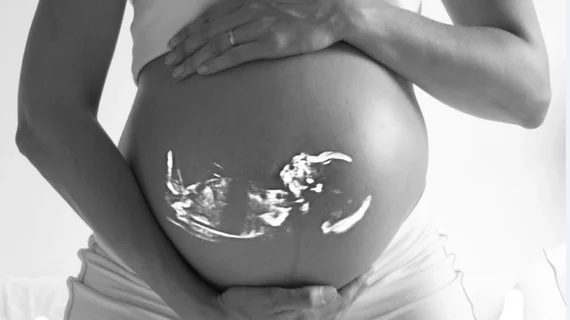Deep learning model boosts trisomy 21 detection on ultrasound images
Researchers recently developed and validated a deep learning model that can identify trisomy 21 in the first trimester of a pregnancy based on findings from ultrasound images.
Trisomy 21—a chromosomal anamoly that causes developmental delays and intellectual disabilities—can be detected via ultrasound and cell-free fetal DNA validation. While DNA screening is up to 99% accurate, it comes at the cost of a high price tag and some studies have suggested that other more cost-effective options, such as ultrasound, should be explored.
When using ultrasound, providers measure fetal nuchal translucency (NT) thickness and other measurements as a reliable way to confirm and rule out Trisomy 21. The accuracy of these measurements depends greatly on the sonographer completing the exam though, which is a cause for concern for some experts in the field.
“These markers need sonographers’ elaborate annotations and measurements in ultrasonographic low-resolution images. Therefore, a better artificial intelligence (AI) approach should be explored to screen for trisomy 21 accurately,” corresponding author Qingqing Wu, MD, of Beijing Obstetrics and Gynecology Hospital, and colleagues explained.
Given the proven benefits of the use of artificial intelligence in other diagnostic imaging scenarios, researchers hypothesized that a deep learning model would boost the detection of trisomy 21 during the first trimester of pregnancy.
They used 822 case and control participants (550 for training and 272 for validation) between 11 and 14 weeks pregnant for their research. Experts were blinded to NT measurements and findings were confirmed by chorionic villus sampling or amniocentesis.
The deep learning model performed well, recording an AUC of .98 in the training set and .95 in the validation set. Compared to standard NT markers traditionally used, the DL model yielded better detection performance, prompting the researchers to suggest the model could have a future role in noninvasively screening for the anomaly.
"Our model is a potential tool to improve the primary trisomy 21 screening based on ultrasonographic images for universal clinical application," the authors concluded.
View the detailed research on JAMA Network Open.
Related ultrasound news:
High-intensity focused ultrasound effectively treats PCA, reduces side effects
How well does O-RADS perform in a nonselected, low-risk cohort?
AI model could open doors for greater access to obstetric ultrasound
Algorithm performs at expert level when distinguishing between benign and malignant ovarian tumors

